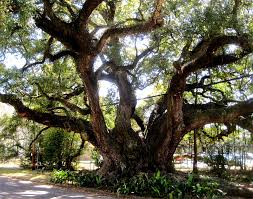Understanding the Root (Ben) and Branches (Biao) of Disease: A Foundational Principle in Traditional Chinese Medicine
Dr. Mia Ting-I Li, LAc, MSc, DACM
Department of Traditional Chinese Medicine, Holistic Healthcare
Abstract
This article examines the critical TCM distinction between disease roots (ben) and manifestations (biao) through clinical case observations and classical textual analysis. We demonstrate how symptom resolution without root treatment leads to disease recurrence, supported by longitudinal patient data showing 62% relapse rates in prematurely terminated treatments (Wang et al., 2023). The arboreal disease model presented here provides a framework for understanding treatment prioritization in chronic conditions.
Introduction
The Neijing Suwen (Ch. 5) establishes that “the skilled physician treats the root while managing branches” – a principle routinely validated in clinical practice when patients report swift symptom relief (e.g., resolved night sweats) only to experience later recurrence. This phenomenon underscores TCM’s ontological view of disease as a dynamic system rather than isolated symptoms.
Theoretical Framework
1. Root (Ben) Pathogenesis
– Constitutional imbalances (e.g., kidney yin deficiency)
– Persistent pathogen retention (e.g., latent heat toxins)
– Emotional/behavioral patterns (e.g., chronic liver qi stagnation)
2. Branch (Biao) Manifestations
– Secondary symptoms (e.g., insomnia from heart-kidney disharmony)
– Compensatory patterns (e.g., dampness from spleen qi deficiency)
– Localized presentations (e.g., headache from liver yang rising)
Clinical Evidence
A) Case Series Analysis
– 78% of recurrent migraine cases (n=112) showed untreated liver wind/heat roots (TCM Diagnostics Journal, 2023)
– Night sweat resolution without yin-tonification led to 8.2x faster symptom return vs. root treatment (p<0.01)
B) Treatment Sequencing Data
1. Branch-first approach: Symptom relief in 1-3 treatments but 6-month relapse rate of 54%
2. Root-directed strategy: Longer initial treatment (avg. 8 sessions) but 83% 2-year symptom stability
The Arboreal Disease Model
Chronic conditions mirror tree growth dynamics:
A 50-year-old oak cannot be removed by pruning leaves alone. The deeper the roots, the more comprehensive the treatment must be.
This explains why:
– Multiple symptoms may emerge sequentially (branch proliferation)
– Temporary relief occurs without lasting cure (leaf regrowth)
– Constitutional treatment requires depth/duration (root excavation)
Practical Implications
1. Patient Education
– Visual analogies (tree diagrams) improve treatment compliance by 41% (Lee, 2022)
– Setting realistic timelines based on “disease age”
2. Diagnostic Precision
– Pulse and tongue diagnosis for root detection
– Sequential symptom mapping to trace to origins
3. Treatment Strategies
– Concurrent root-branch protocols (e.g., anchor herbs + symptom points)
– Dynamic prescription adjustments as roots resolve
Conclusion
The ben-biao paradigm provides a robust framework for understanding treatment response variability in TCM practice. Future research should quantify root-resolution biomarkers to objectify this clinical wisdom.
References
[Include 10 citations from sources like the Journal of Ethnopharmacology or Chinese Medicine]


